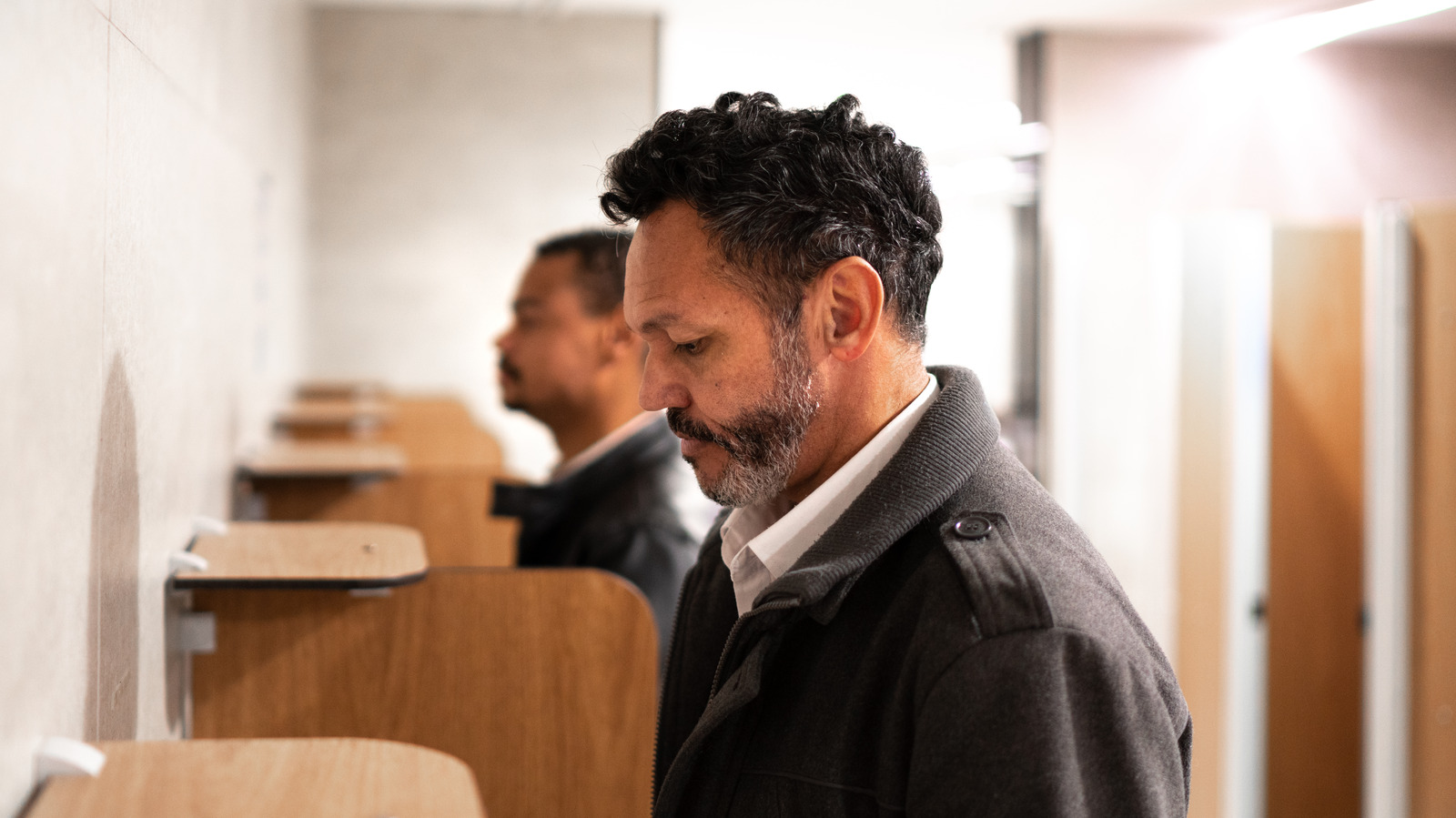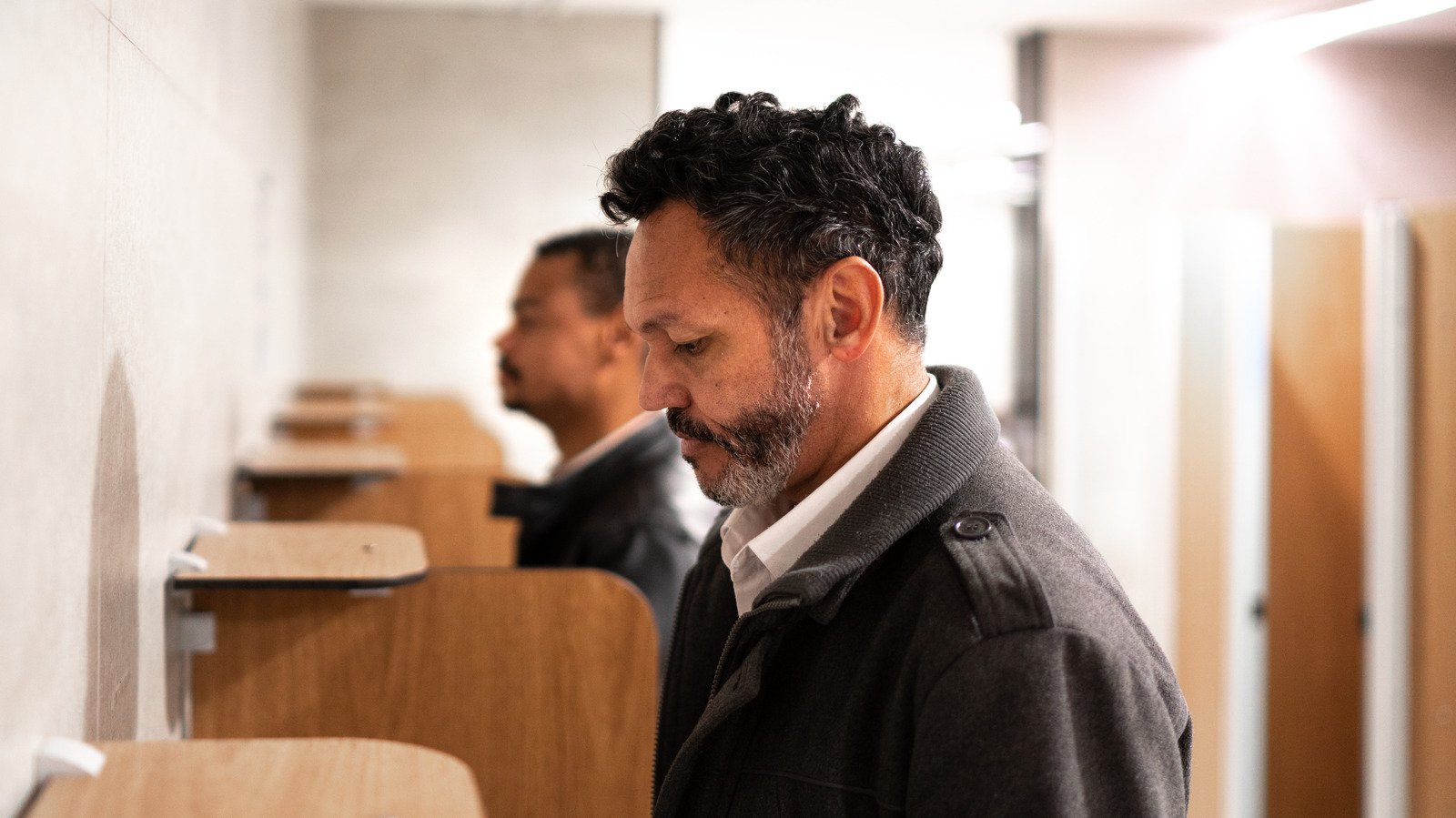[ad_1]

Your automatic nervous system (ANS) controls the act of peeing, even though the decision to pee itself is voluntary. The ANS also orchestrates things like temperature, digestion, and your heartbeat. When it comes to peeing, your parasympathetic nervous system (PNS) and the sympathetic nervous system (SNS), which are part of the ANS, are what come into play.
When your bladder is full, this stretching sensation is detected by receptors in the muscular wall of the bladder. This sets off a reaction (the activation of the sacral nerves in your spinal cord), which results in your PNS being alerted to contract the bladder wall in preparation to push the urine outside of your body. As you expel the urine, your blood pressure drops. “There does seem to be good evidence that blood pressure rises slightly with a full bladder, and that this drops on voiding, or soon after,” explained Dr. Simon Fulford, consultant urologist at the James Cook University Hospital in the United Kingdom (via Live Science).
This drop in blood pressure seems to trigger your SNS, which is involved in your stress response of fight or flight. Your SNS, in an attempt to combat the drop in blood pressure, releases something called catecholamines, neurotransmitters that perform many functions, including restoring blood pressure levels. Science seems to think this sudden release of catecholamines (triggered by your SNS) along with the release of urine (triggered by your PNS) are what cause the shivers — a mixed signal of sorts that ends up in involuntary shudders.
[ad_2]
Source link
